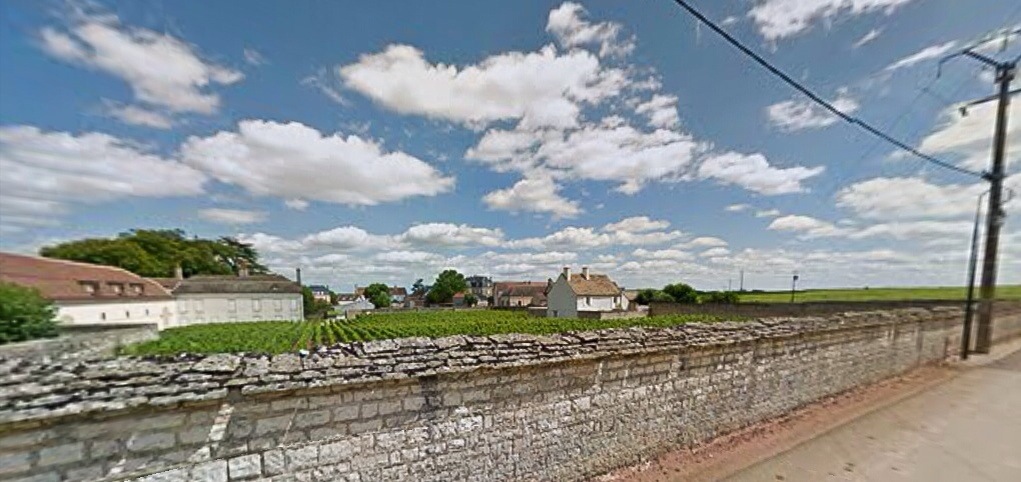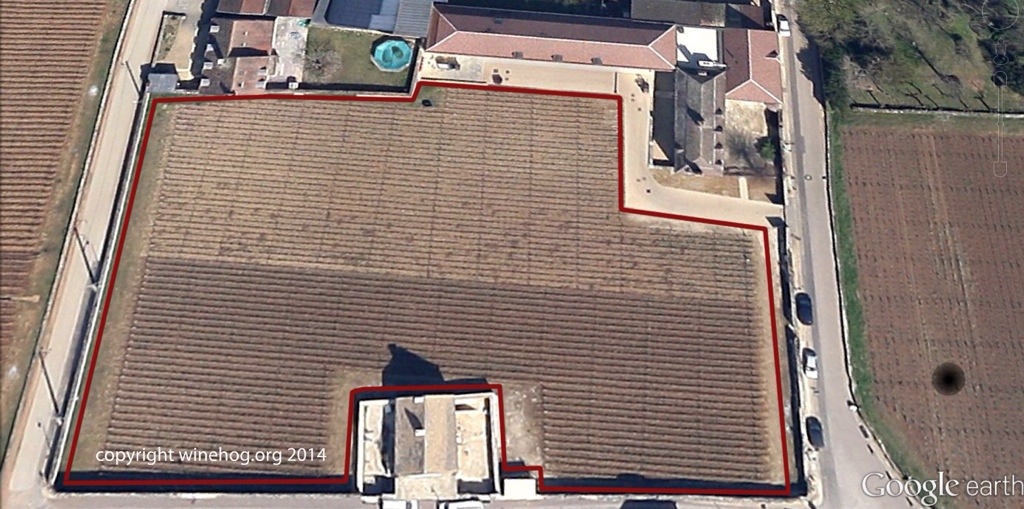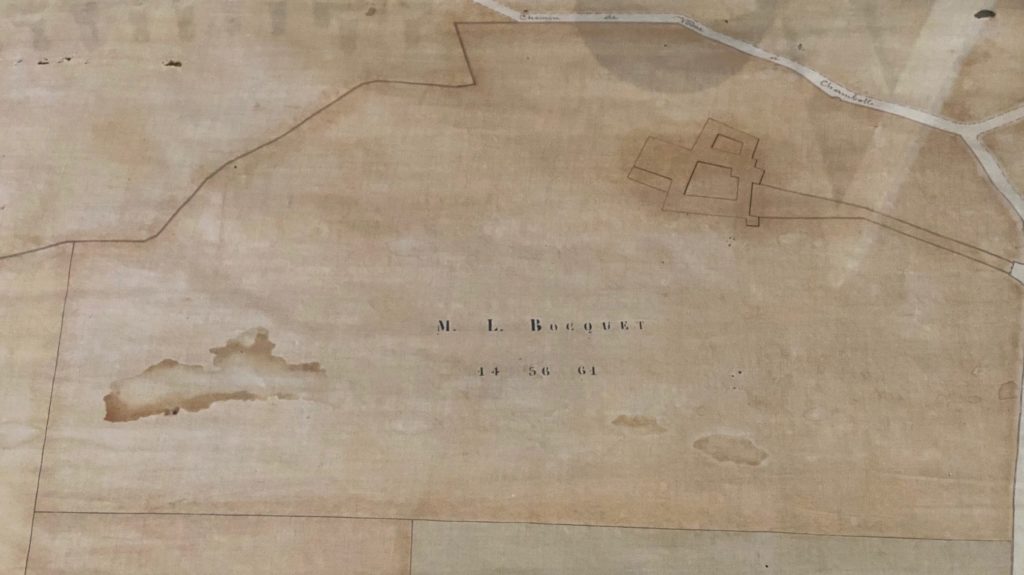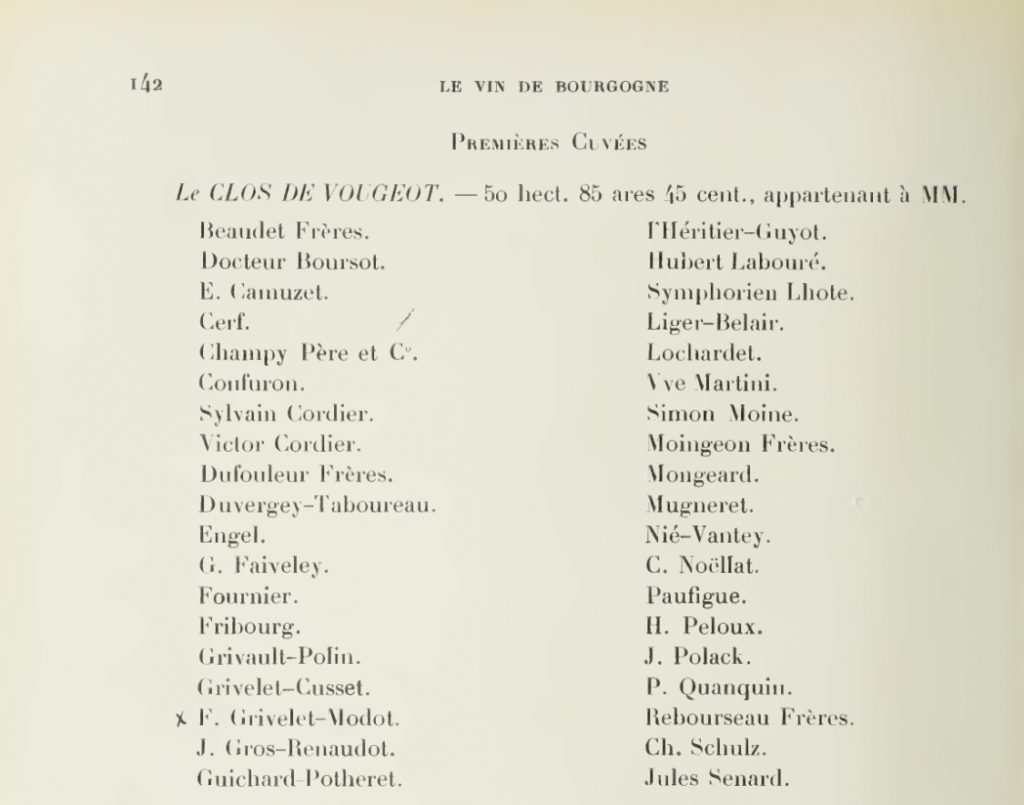The Clos de Vougeot (the vineyard) and Clos Vougeot (the wine) is one of the most prominent grand crus, despite ranking below the very top of the tree. Few would compare it with Romanee-Conti, La Romanée, La Tâche, Richebourg, Romanée Saint-Vivant, Richebourg, Musigny Clos Saint-Denis, Chambertin, or Chambertin Clos de Beze.
The Clos de Vougeot is, however, a brilliant – if variable – terroir, and is perhaps even a bit overlooked, despite new producers increasing the focus on the clos.

Domaine d’Eugenie in Vosne-Romanée is one of the newer names. In 2006, it took over the Clos de Vougeot vineyards previously belonging to Domaine Rene Engel.
Let’s take a closer look at the Clos de Vougeot of d’Eugenie.
Creating Domaine d’Eugenie
Domaine d’Eugenie was created by Francois Pinault in 2006, when he acquired the Rene Engel estate following the tragic death of Philippe Engel. Pinault, who also owns Chateau Latour in Bordeaux, wanted to create a top Burgundy domaine, and the Engel vineyards provided a beautiful start. He named the domaine (as far as I know) after his grandmother.
Pinault was, however, in need of a facility in which he could make the wine, and after vinifying early on in a rented facility in Nuits-Saint-Georges, he acquired the old and historic Frantin estate from Albert Bichot. The village vineyard Clos Frantin was included in the deal, and in 2011 this vineyard was officially renamed Clos d’Eugenie when Pinault’s brand released the 2009 vintage.
Pinault has invested significantly in the Frantin estate, and the buildings have been renovated to the highest standards. A new chai (cellar) has been built behind the estate buildings (photo below).

The history – Domaine Rene Engel
Founded by René Engel in 1919, the domaine was located in Vosne-Romanée at the very heart of Burgundy’s vineyards. René was born in 1892, and 12 years later, his mother (also Eugenie) was widowed. She subsequently married Paul-Francois Faiveley, a distant relative of the Faiveleys in Nuits-Saint-Georges.
The couple pooled their vineyards, and they were the basis for the formation of Domaine René Engel. These vineyards included some of the terroirs today known from Domaine d’Eugenie, while others were added by René Engel along the way.
Between 1919 and 2004, three generations – René, his son Pierre, and grandson Philippe – succeeded each other running the family estate, which included some of the most prestigious Burgundian crus.
Sadly, Philippe Engel died at a relatively young age in 2005, and the vineyards were subsequently sold to Francois Pinault.
The Domaine d’Eugenie/Rene Engel holding in the Clos de Vougeot was originally a part of the Léonce Bocquet section of the clos.
The Léonce Bocquet section
Léonce Bocquet, a prominent Savigny-les-Beaune negotiant and producer, owned in total 15 hectares in the clos, as well as the Chateau du Clos de Vougeot itself. The family was forced to sell in 1920, having made the unwise decision to use ungrafted vines to replant after phylloxera.
The replanted vines died during World War I, and the family had to sell the plots in Clos de Vougeot, as well as most of the rest of the tremendous vineyard portfolio that Léonce Bocquet had assembled before he died in 1913.
The map below shows most of the Léonce Bocquet plot, located at the very top of the clos and encompassing the Chateau Clos de Vougeot itself.

Estates including Meo-Camuzet, Gros, Engel, and other primarily Vosne domaines divided the Léonce Bocquet holdings in 1920.
The Engel family plot was recorded by Rodier1 in 1920. His entry does not document whether it was a part of the Léonce Bocquet section. Looking at the maps, though, it’s clear that the Engel parcel was a core part of Léonce Bocquet’s holding.
The Engel ownership is confirmed in my version of Rodier (see below). But given that the Bocquet sale occurred that same year, mine is likely a later-edition Rodier, printed after 1920.

The Engel family and 13 other Vosne-Romanée producers took over Léonce Bocquet’s vines in 1920 – a total of 22 buyers shared the Bocquet estate. It was the end of an era, and a testament to the devastation caused by the phylloxera epidemic.
You need to login as a Premium subscriber to read the rest of this article. If you are not a Premium subscriber, use the subscribe function and sign-up.
Related articles
- Visit to Domaine d’Eugénie – Tasting the 2023sBurgundy in the wintertime can be as gloomy as a poor vintage of Nuits-Saint-Georges served too hot to enhance the overly extracted misery. I should not complain, but some days do not call for the largest smiles, however, last Thursday did actually induce both smile and laughter and some fruitful and interesting talks. Present at Domaine d`Éugenie ...
- Visit to Domaine d’Eugénie – Tasting the 2022sThe Domaine d’Eugénie wines have improved tremendously over the years – especially the last five – reaching new levels of refinement and delicacy. These are very refined wines! Michel Mallard By giving the wines the proper time and respect, some truly lovely, joyful moments can be had from d’Eugénie. Vins d’emotion? Yes, we’re now there! The premise of ...
- Maisons et Domaines Henriot Merges with Artemis DomainesBig news in the wine (and Burgundy) world, as Maisons et Domaines Henriot has merged with Artemis Domaines, the wine -business part of François Pinault’s empire. In a fusion of French wine notability, Pinault’s Artemis – owner of wineries such as Bordeaux’s Château Latour, and Clos de Tart and Domaine d’Eugenie in Burgundy – is buying ...
- The Clos Vougeot Tasting 2022During the Grand Jours de Bourgogne there is usually a Clos Vougeot tasting for the press; and so it was this year. It’s a good initiative, although some of the wines perhaps lacked the standard that one expects from a modern-day Clos Vougeot. The prices of grand cru Burgundy today somehow raise the consumer’s expectations ...
- Terroir Insight: Domaine d’Eugenie Clos de VougeotThe Clos de Vougeot (the vineyard) and Clos Vougeot (the wine) is one of the most prominent grand crus, despite ranking below the very top of the tree. Few would compare it with Romanee-Conti, La Romanée, La Tâche, Richebourg, Romanée Saint-Vivant, Richebourg, Musigny Clos Saint-Denis, Chambertin, or Chambertin Clos de Beze. The Clos de Vougeot is, ...

 - A true vin d’émotion – a Burgundy of passion
- A true vin d’émotion – a Burgundy of passion - A truly hedonistic wine – lively and enjoyable
- A truly hedonistic wine – lively and enjoyable - A vivacious wine for pure indulgance
- A vivacious wine for pure indulgance - A potential vin d´émotion - frais et léger
- A potential vin d´émotion - frais et léger